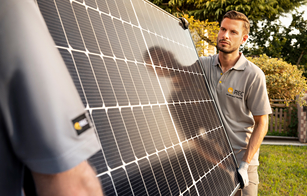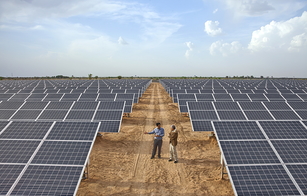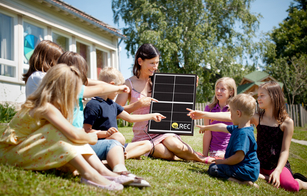US Residential Solar Today: The Solar Coaster Rides Again
The often-volatile PV market has always been (half) jokingly described as the “Solar coaster”. However, the start of 2023 would best be described as a roller coaster attached to a car going through a bigger rollercoaster (i.e., the broader US and global economy).
2022, by almost every metric, was a very good year for residential PV, as the market came roaring back from the pandemic years. The US residential segment skyrocketed in 2022, with Residental PV growing 40% to 6GW, helped by the passing of the Inflation Reduction Act, which included an extension of the 30% Investment Tax Credit, rising utility rates, and the impending step-down in California’s net metering incentive scheme.
Wood Mackenzie’s base case sees residential growing at an average annual rate of 5% over the next five years, they have also published an optimistic forecast making a case for double that rate of growth. In comparison, the utility-scale segment saw their yearly installations drop by 31%. This decline was largely due to the import restrictions in place under the Uyghur Forced Labor Projection Act (UFLPA), as US Customs continues to use this law to detain large volumes of panels that are suspected of containing components that come from regions using forced labor.
These Customs detentions created a disruption to the PV supply chain that is only now starting to correct itself as more panels are released. However, these market conditions may reverse rapidly as it’s assumed CBP will continue enforcement efforts, targeting new rounds of importers. The industry should also keep a careful eye on the Anti-Dumping and Countervailing Duty (AD/CVD) circumvention case working its way through the Department of Commerce. In December, the DOC issued a preliminary ruling that indicated several of the examined companies were circumventing duties, and a final determination is expected in the upcoming months. While President Biden placed a moratorium on the collection of these duties through June 2024, it's possible that could be removed through a legal filing or through legislation that has recently been introduced in Congress.
If supply chain instability weren’t enough of a challenge, the solar industry also has broad exposure to the current banking crisis, which was brought to the forefront with the collapse of Silicon Valley Bank (SVB). SVB was a banking partner to many in the solar industry and while it seems that the near-term disruption of the bank being moved under the control of the FDIC is behind us, it shined a harsh light on the reasons behind the collapse. SVB was a large holder in securities tied to long consumer loans, like mortgages. With the recent rapid rise in interest rates by the Fed to help cool inflation, SVB had to take a substantial impairment on the value of their mortgage-backed securities, which is what triggered the bank run that led to their collapse. As it turns out, there is something else being sold as long-term consumer debt as part of asset backed securities (ABSs) – solar loans. As finance companies are trying to outrun the Fed to be able to sell off their loans, we’re seeing some very challenge market conditions develop, including for residential PV customers.
However, there are reasons for optimism. Despite challenging macroeconomic conditions, consumer interest in solar continues to be strong. The International Energy Agency (IEA) recently reported that the average utility rate is due to increase more than 14% between 2022 and 2023. As a result, consumers will be facing significant sticker shock when they get their first summer utility bill, which could approach several hundred dollars. Given all these factors, today remains the best day for a consumer to go solar.
And, beyond just rooftop PV panels, there are several other residential cleantech segments that are looking at substantial growth over the next five to ten years. Residential battery system installations are expected to grow more than 20% annually, becoming a $23 billion market by 2027, driven by weather-related blackout concerns, new tax credits, and as a hedge against rising electricity prices. California is seeing storage attach rates for new PV projects at >10% and growing, as the new NEM 3.0 scheme will make pairing storage with rooftop solar the most economical choice. Additionally, the demand for EVs is forecasted to only increase. This means residential EV charging is expected to grow at approximately 25% per year to reach a $19 billion opportunity by 2030. Those customers who are trying to minimize their carbon footprint and dependence on the traditional grid are seeing pairing rooftop PV with home EV charging as an attractive solution. Further, bidirectional charging would allow customers to effectively use their EV as a home backup battery.
While there are undeniably economic and policy headwinds right now for residential solar, there are many reasons to be optimistic for the future of renewables and the ways in which customers will be integrating these products into their homes. In the meantime, players should buckle up and keep their hands inside the ride at all times.







